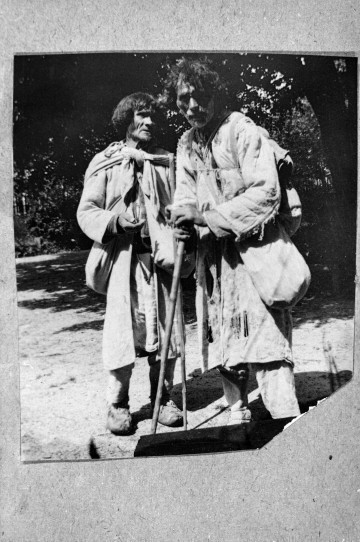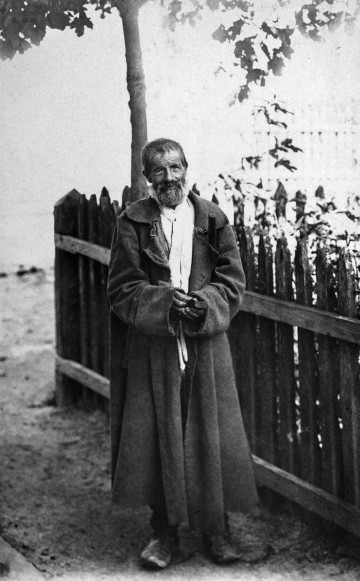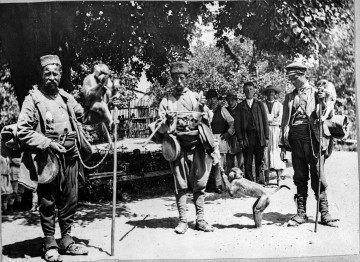
Folk type: itinerant beggars
1901
National Museum in Lublin
Part of the collection: European classics of modernity
Zofia Stryjeńska was an artist living between 1891 and 1976. She studied painting under Leonard Stroynowski and later at Maria Niedzielska's Private School of Fine Arts for Women in Kraków. Wishing to develop her skills at the Munich Academy of Fine Arts, in 1911, she joined the group of students pretending to be a man (at that time, women were not yet admitted to the academy). Stryjeńska participated in the International Exhibition of Decorative Arts in Paris in 1925. She won four Grand Prix: for architectural decorations, textiles, book illustrations and placards; she was also awarded the Knight's Cross of the Legion of Honour. She was commissioned to decorate six panneaux (decorated planes in the shape of a rectangular field resulting from an architectural division of a wall plane) depicting the ritual year in Poland in the main hall of the Polish pavilion designed by Józef Czajkowski. A joyful mood dominated these works, and the depicted scenes referred to Polish folk tradition and the affirmation of life close to nature. They were part of the current of joy after Poland regained independence. The artist created at that time drawing on the poetics of art déco. The forms gained a classicist and geometric character. The artists of that time strived for a synthetic approach to the forms making up a composition. Attempts to emphasise the beauty in the function of utilitarian objects were the focus of interest. In the collection of the National Museum in Szczecin, there is a watercolour Żebraczka z dzieckiem [The Beggar Woman with a Child] from around 1925. Although poetically close to the art déco style, among other things through the purity and clarity of its forms of expression, the work is no longer the same subject matter as that undertaken as part of that phenomenon in art. It is not the effect of being overwhelmed by the possibilities of free Poland and the desire to emphasise the uniqueness of what constitutes Polish folklore, but rather to show the other face of the circumstances of the new reality - the poverty that was breaking through in many places of everyday life. The most striking expression of this was the depiction of a mother with her child.
Beata Małgorzata Wolska
Author / creator
Dimensions
cały obiekt: height: 77 cm, width: 57 cm
Object type
painting
Creation time / dating
Creation / finding place
Identification number
Location / status

1901
National Museum in Lublin

1910
National Museum in Lublin

1903
National Museum in Lublin
DISCOVER this TOPIC
Museum of King Jan III's Palace at Wilanów
DISCOVER this PATH
Educational path